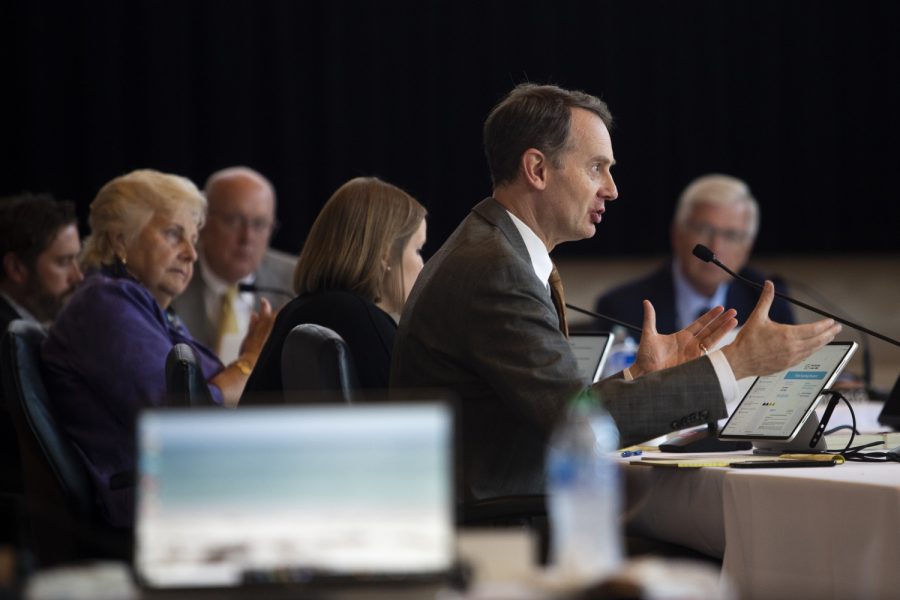The United States has seen a rapid increase in the number of graduate students from India, according to a recent study, and the University of Iowa fits right in, though officials believe there’s more that can be done recruiting Indians to Iowa City.
“It’s a bit more difficult because … traditionally, Indian students have stayed at home for their undergraduate degrees rather than come abroad for graduate school,” said Downing Thomas, associate provost and dean of International Programs.
The 2013 International Graduate Admissions Survey compiled by the Washington, D.C.-based Council of Graduate Schools found the number of first-time Indian graduate student enrollment in the United States has increased 40 percent in the past year (2012 to 2013), a number significantly higher than previous years.
At the UI, the number of Indian students jumped from 177 students to 263, a 48.6 percent increase.
“We’ve changed our focus considerably [in China] to develop relationships with high schools … where we know there’s a good education in those schools and where we know the students are successful and [will] come here,” he said. University officials have tried similar tactics in India but are less successful at delivering the message.
Downing said one reason this is the case is because of the traditional mindset of students and parents in India about studying abroad.
“Indian parents tend to have a focus on Stanford and MIT and nothing in between,” he said.
Sanjay Mittal, an executive board member on the Indian Student Alliance at the UI, said he thinks ranking plays a large role in international students’ decision as most families look at higher ranked institutions.
To improve this, he said, the UI should work on outreach.
“Not everyone can make it to the top 20 or 30 schools [and] people don’t know about the UI,” he said. “Because the UI doesn’t have a base in India … students don’t reach out to the university themselves, the university has to reach out [to them].”
Sandeep Bodduluri, former graduate student liaison for the Indian Student Alliance at the UI, said he thinks any decrease or fluctuation in numbers stems from the high price of tuition and fees.
“I wouldn’t say anything is lacking here, it depends on [many] … factors,” he said. “From any country, international students [need to] try to get funding.”
Bodduluri said despite the UI’s successful efforts to incorporate Indian students, many may choose to enroll at different institutions where they may receive more funds.
Mittal said although he does see a drastic difference in the number of Indian and other international students, he is happy with the current ratio.
“I came here for the American experience,” he said. If there were more Indian students, he said, he would not receive the opportunities he anticipated when coming to the United States.
Mittal said he thinks the UI should spend its energies on recruiting students from places such as Australia and Europe instead of India to increase multicultural efforts.
Thomas said encouraging Indian students to attend the UI is still one attempt to increase diversity on campus.
“India is set to go past China as the most populated country in the next couple of years,” he said. “[It] is a country that we need to pay attention to and it’s important to make faculty connections and student exchanges.”






